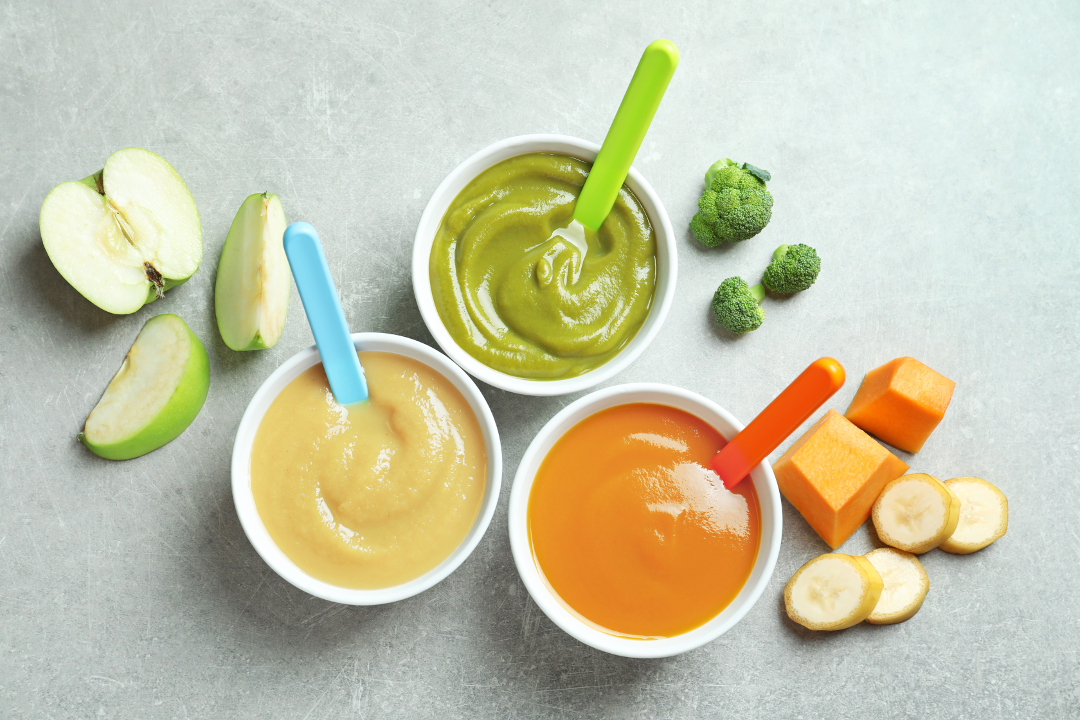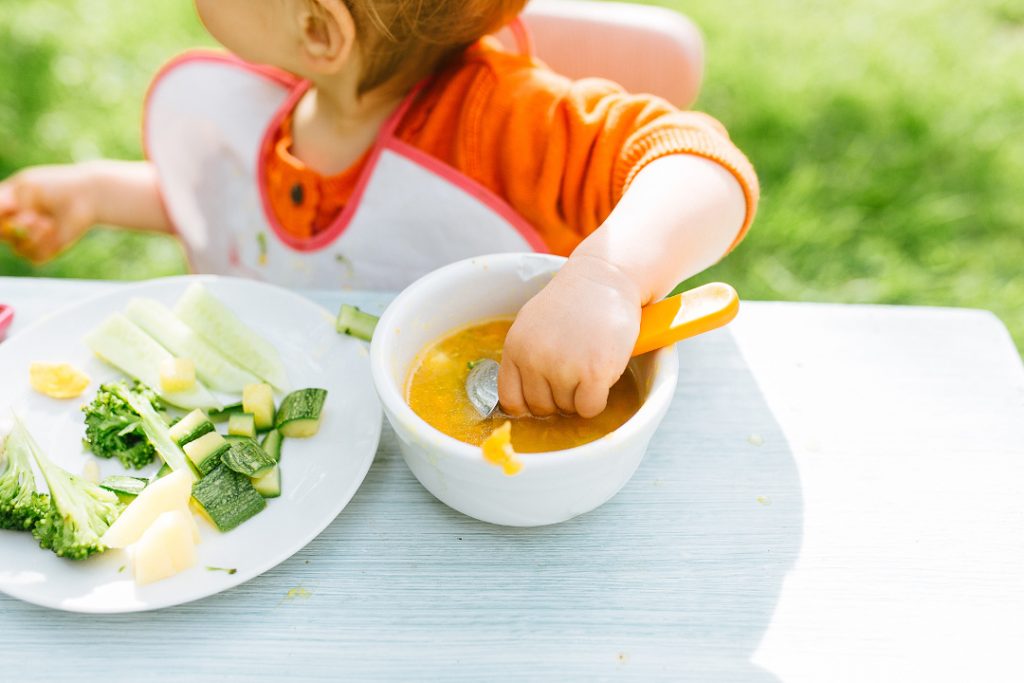
Good habits… start young!
Diet and physical exercise are important indicators of health, from the earliest stages of life. During pregnancy, the baby’s movement (indicator of physical activity) and growth (indicator of the nutritional supply) are two important parameters which are monitored, and when they are compromised, indicating that all is not well with the child, they may determine the moment of birth.
In the first few months of life, milk should be the only food, and breast milk meets all the baby’s needs, hence it should be provided until as close as possible to the sixth month. Breast milk changes in its composition and taste, reflecting not only the infant’s needs but also the mother’s nutritional health and diet. In fact, breast milk is much more than just a food (as well as nutrients, it contains more than 400 bioactive substances which play an important role in the child’s future health and illnesses) and adapts to the infant’s needs (more protein in the first three or four months, because the rate of growth is faster, more protein for boys, more carbohydrates at the start of each feed, to provide energy, and more fat at the end, to ensure development of the central nervous system, retinas and cell membranes…).
It also carries the flavour of the mother’s diet, which means you can start to train the infant’s palate from this early stage. What is more… the amniotic fluid reflects the variety of flavours in the mother’s diet… So if she has a varied and balanced diet, with a range of flavours… her child will start right away to learn to like and accept them. In the meantime, around the fourth to the sixth month, your doctor or paediatrician will recommend starting with other foods in your family diet.

According to the latest recommendations (ESPGHAN and the American College of Paediatricians), when you start giving other foods, there are no restrictions on what you can feed your child and you should allow him or her to discover the full range of flavours and textures. Again, the more varied the diet… the more opportunities you have to train your child to accept different flavours and textures, right from the start! But the word training is the key here! As for physical exercise or any activity designed to improve a skill, the best approach is try and try again… and so when it comes to flavours (and textures) your motto needs to be to try and try again… and then after ten or fifteen attempts you’ll succeed! Human beings are genetically programmed to have a sweet palate (synonymous with rapid energy and pleasure) but can also reject bitter flavours, as they can be associated with spoiled or hazardous foods (poisons). So, with our in-built sweet tooth, it is relatively common to experience difficulties in getting a child to accept bitter flavours… so you need to take it slowly, and be consistent…
But don’t just insist on it! You need to teach by example! Whilst during the period of diversifying diet (first year of life) it is important to offer the greatest possible variety of foods, to train your child with different textures and flavours, when the child starts to eat the same things as the rest of the family, at around 12 months, it’s essential that the whole family follows the same diet. Children learn through imitation and their role models are their parents, so the food served at meals should be the same for everyone! Several studies have shown that early experiences are important to learning, but persistence in offering certain foods, above all in the second and third years of life, are crucial to stabilising life-long acceptance, meaning that parents need to be responsible and aware of their important role as models.
It is important to offer the greatest possible variety of foods, to train your child with different textures and flavours.
But the importance of training a child in tastes and textures, so that he or she learns to accept a wide variety of foods at an early age, is not just a behavioural issue! It goes much further than this, because early eating behaviour, in the early years of life, has an important effect on health growth and development and also on the child’s future health. This is because of what we call “metabolic programming”, which means that the nutrients ingested at this important stage of life will affect the expression of certain genes and result in future health or ailments, such as obesity, cardiovascular disease, high blood pressure, diabetes, cancer…
One of the reasons appears to be environmental effects on intestinal microbes, especially from the type of food we eat. Another may well be the consequences of consuming certain “additives”, such as salt and sugar. Neither of these should be used during the first year of life, as they are not necessary and should not form part of our diet. If an infant follows a salt-free diet in the first year of life, you can expect him or her to do so when he starts eating the same as his family… unless the family provides salt in what they cook. So this is a good reason for families to cut down or even cut out salt from their diet, for the sake of the child’s health and their own!
This means it is important to remember that the way you educate a child to eat has a major impact, for life, on what is called “taste programming” and also on “health-sickness programming”, and this clearly shows the importance of the carers’ attitude and choices, especially in the case of parents. On the subject of educators, schools should take an approach consistent with that of the parents (and the parents with that of the school!) and offer healthy food. Nurseries, infant school, junior school… these are places where children learn and are second only to their parents in shaping their world. They are also the place where many children have their three daily meals, meaning they play a crucial role in teaching them how to eat. Good habits must be encouraged, and group mealtimes are often a good way of getting children to accept certain foods.

Combining play and educational activities with food is a good strategy, as for example associating vegetables or fruits with the name of their favourite schoolmate (e.g. the apple that makes Margarida grow, the broccoli that makes Luís run so fast…). You can also try matching them to cartoon characters or idols, attributing special powers to them (like the spinach that gives Spiderman his powers….). Conversation should be encouraged at mealtimes… and avoid rushing or putting pressure on children, because eating slowly and noticing what we eat is pleasurable and helps them accept new foods. The “Healthy Eating from ages 0 to 6” handbook (DGS website) will be helpful for parents, teachers and professionals.
Lastly, don’t forget that, for children to experience optimum growth and physical and psycho-social development, and to be healthy for life, you need to “programme” your child from an early stage for an active lifestyle. Movement is the best indicator and factor in promoting health. The history of human evolution shows that we are genetically programmed to be physically active. Of course, in the past, if our ancestors wanted to eat, they had to run to hunt, climb trees to pick fruit and, more recently, until around fifty years ago, all our working activities entailed heavy physical activity (in farms, factories…). Today, we spend a lot of the time sitting down, and food (in large quantities) is easily available, in a regular and immediate form for a large percentage of the world’s population.
This mismatch between our in-built “programming” and our current lifestyle results in a complete imbalance in our energy metabolism, adding to the risk of obesity and cardiovascular disease, as well as to depression and other behavioural disorders. Once again, programming for “a healthy lifestyle” should start early and is significantly influenced by the example given by parents and teachers. Good habits are “programmed” from the earliest months of life, and trained over a lifetime. Creating good habits is a responsibility of those educating our children, and depends on their setting an example, as models.



